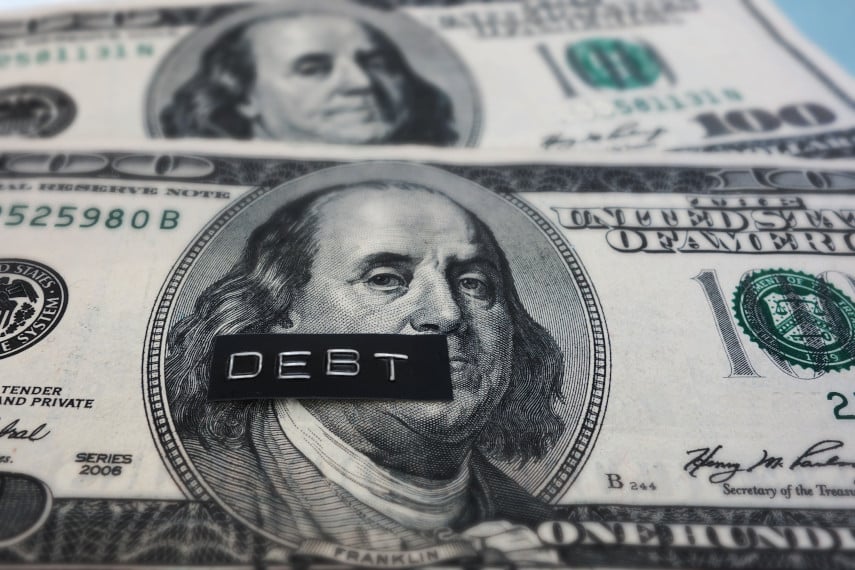
image: while the concept may be humorous, the damage to your future security caused by failing to diversify is very real
One of the real tragedies of the 2001 Enron debacle was how many loyal employees had their entire life savings in company stock. Everything they had worked for, all their hopes and dreams of retirement, was gone in a matter of days. As shocking as that seems, many people today are still making the same mistake. Whether it’s company stock or a neglected 401(k), there are millions of people that have too much money in stocks and too much invested in single stocks.
Market crashes and recessions are the inevitable consequence of the bubble economy. People in their forties or fifties have been through at least two recessions in their adult lives. There was one relatively minor recession in 2000 and a major one in 2008. Even if you could see those coming, and there were troubling signs in the days leading up to both market collapses, the exact timing was difficult to pin down.
In the months and even years leading up to 2008 many people sensed things were amiss. Certainly anyone in the real estate business in 2005 and 2006 knew there was something wrong. But here’s the other, paradoxical, danger: If that bad feeling had motivated someone to dump their equity investments in 2005, sure, they would have avoided the catastrophic losses of 2008. But they also would have missed the gains in 2006 and 2007.
Smart Investing Takes Guts and Discipline
Disciplined investing demands that you stay in the market even as storm clouds threaten, only to dissipate into sunnier days. Recently, with each new stock market high there are good reasons to doubt it can go up further. Yet at every turn so far the averages managed to claw higher. All the same, those in their fifties don’t have ten years to wait out a market recovery. The way a small investor balances the need to stay invested with the need to protect their asset value when approaching retirement is called diversification.
Diversification Works
Diversification works because the various asset classes do not rise and fall in harmony. Hard assets, which include things with inherent value, like real estate and physical precious metals, are primarily driven by the need for preservation over growth. While hard assets grow slowly or not at all, they are optimal for locking in the buying power of your cash. Hard assets provide at least some protection from the twin destroyers of cash value: inflation and monetary policy.
Diversifying Your Own Investments
Hopefully a company 401(k) is not your only form of retirement saving, but even if it is your investments need regular tending. At least once a year you should take a look at your asset mix and adjust the percentages of each class based on your age. As a general rule, the older you get, the less money you should have in stocks. That process of adjusting your asset allocation to fit your age is called rebalancing. Lately rebalancing has meant selling off stocks, which are making new record highs, and using that money to buy bonds, increase your free cash and stock up on liquid hard assets like physical gold and silver—something that can also be done within your retirement portfolio.
You Don’t Have To Be a Stock Picker
You also want to diversify within asset classes and that means owning stocks in different market sectors like financials, industrials, energy and technology. You can do the research and invest in individual companies if you like, many people do, or you can just buy a low-fee mutual fund or ETF that reflects a broad market index like the Dow Industrials or the S&P 500. Those are called index funds and they’re designed to mirror the performance of market indexes. You also want to diversify your other types of assets.
For far too many their only hard asset is an owner-occupied home. A house you live in is a poorly performing asset that is both illiquid (hard to sell) and carries high ancillary costs in the form of maintenance, taxes and insurance. Investment-grade gold and silver coins are a much higher quality hard asset. Gold and Silver Eagles are widely recognized throughout the precious metals industry and are easily converted into cash. In addition, gold and silver have long been considered a hedge against inflation and a time-tested way to preserve the buying power of your savings over decades.
Diversification works and it’s not terribly difficult to practice, once you get the hang of it. At least once a year you should be adjusting your asset mix to be more appropriate to your age. That way, when the next market crash comes, you’ll have protected a good portion of your wealth from danger.






